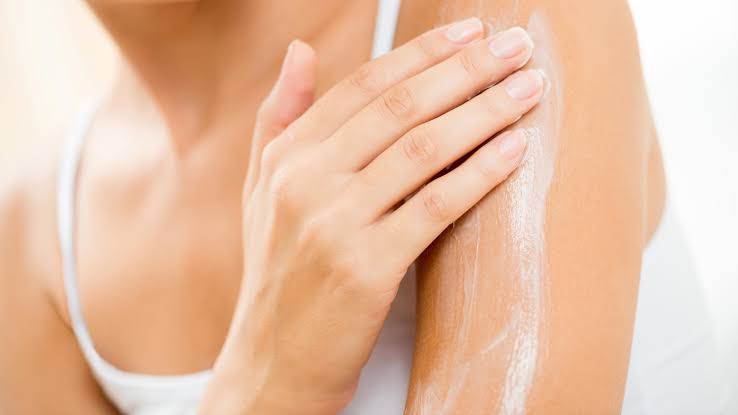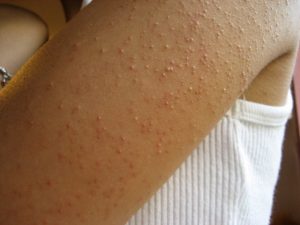What Are Those Small Bumps On Your Body And How Can You Treat Them?

Have you ever noticed small red bumps on the surface of your skin that itch constantly and refuse to go away?

We are here to tell you that you are not imagining this skin condition. In fact, the medical term for this is "keratosis pilaris" - a harmless condition that causes red bumps, dry patches, and a sandpaper-like texture on the skin. These scattered, patchy bumps are not painful or itchy- they don't affect your overall health. They are often found around hair follicles on the upper arms, legs, cheeks, and even the butt.
Who gets keratosis pilaris?
Keratosis pilaris is fairly common to all age groups- children, adolescents, and even adults. While the chicken-skin bumps may begin at any age, the onset is worse during puberty. Research shows that this skin condition has a genetic aspect and can widely be seen in twins. A common consensus is that if one person in the family has keratosis pilaris, it will appear again. However, it is not contagious. People with eczema and extra dry skin are more likely to get keratosis pilaris.

What causes keratosis pilaris?
While the exact cause of keratosis pilaris is unknown, most research shows that the uneven bumps are caused by the extensive accumulation of dead skin cells and keratin- a protein that makes the hair, skin, and nails. The buildup, instead of shedding off naturally or being exfoliated, ends up blocking the opening of the hair follicle which leads to uneven bumps on the skin's surface. It is possible for a small, coiled hair to get trapped underneath the bump which aids to the rough texture of the skin. This may cause an irregular cosmetic appearance and the skin may appear to be studded with small, red, pointy dots.
How do doctors test for keratosis pilaris?
The good news is that the diagnosis of keratosis pilaris is very straight forward and does not require extensive laboratory testing. The appearance of these bumps on the skin is recognizable, and offering a doctor your family history may quicken the diagnosis since there is a strong genetic component to this condition.

How can you treat keratosis pilaris?
The bad news is that there is no cure for keratosis pilaris, yet. For many patients, the condition tends to subside itself overtime. However, there are a few measures you can take to alleviate the dry texture and the bumps on the surface of your skin:
1. Avoid scratching, squeezing or rubbing the infected area of the skin
2. Exfoliate! Research suggests chemical exfoliants that get rid of the dead skin cells while simultaneously moisturizing the skin. Our Glow Toner contains a gentle concentration of glycolic acid which deep-cleans the pores and encourages skin renewal. Use it on the affected area, or out for body creams or washes containing glycolic acid, lactic acid or other AHAs.
3. Substitute hot water for warm or cold water in the shower.
4. Use a humidifier at home for added moisture.
5. Keep a hydrating mist handy any time you feel like your skin is getting dry. Our Jasmine Dew mist is ideal for times like these because it's loaded with hydrators like glycerin and hyaluronic acid.
6. Lather on thick moisturizers in affected areas.
As a general rule of thumb, consistency is a must. Since there is no universally effective treatment for keratosis pilaris, it is important to note that no treatment is uniformly effective for each case of keratosis pilaris. In some cases, it may improve without any treatment and in others, the bumps may subside but never completely disappear. While it may get frustrating and you may have some bad days, remember to hold on just a little while longer and take good care of your skin!




Comments